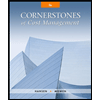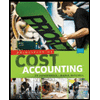Zanda Drug Corporation buys three chemicals that are processed to produce two types ofanalgesics used as ingredients for popular over-the-counter drugs. The purchased chemicalsare blended for 2 to 3 hours and then heated for 15 minutes. The results of the process aretwo separate analgesics, depryl and pencol, which are sent to a drying room until their moisture content is reduced to 6 to 8%. For every 1,300 pounds of chemicals used, 600 pounds ofdepryl and 600 pounds of pencol are produced. After drying, depryl and pencol are sold tocompanies that process them into their final form. The selling prices are $12 per pound fordepryl and $30 per pound for pencol. The costs to produce 600 pounds of each analgesic areas follows:Chemicals $8,500Direct labor 6,735Overhead 9,900The analgesics are packaged in 20-pound bags and shipped. The cost of each bag is $1.30.Shipping costs $0.10 per pound.Zanda could process depryl further by grinding it into a fine powder and then molding thepowder into tablets. The tablets can be sold directly to retail drug stores as a generic brand. Ifthis route were taken, the revenue received per bottle of tablets would be $4.00, with 10 bottlesproduced by every pound of depryl. The costs of grinding and tableting total $2.50 per poundof depryl. Bottles cost $0.40 each. Bottles are shipped in boxes that hold 25 bottles at a shippingcost of $1.60 per box.Required:1. CONCEPTUAL CONNECTION Should Zanda sell depryl at split-off, or should depryl beprocessed and sold as tablets?2. If Zanda normally sells 265,000 pounds of depryl per year, what will be the difference inprofits if depryl is processed further?
Zanda Drug Corporation buys three chemicals that are processed to produce two types of
analgesics used as ingredients for popular over-the-counter drugs. The purchased chemicals
are blended for 2 to 3 hours and then heated for 15 minutes. The results of the process are
two separate analgesics, depryl and pencol, which are sent to a drying room until their moisture content is reduced to 6 to 8%. For every 1,300 pounds of chemicals used, 600 pounds of
depryl and 600 pounds of pencol are produced. After drying, depryl and pencol are sold to
companies that process them into their final form. The selling prices are $12 per pound for
depryl and $30 per pound for pencol. The costs to produce 600 pounds of each analgesic are
as follows:
Chemicals $8,500
Direct labor 6,735
Overhead 9,900
The analgesics are packaged in 20-pound bags and shipped. The cost of each bag is $1.30.
Shipping costs $0.10 per pound.
Zanda could process depryl further by grinding it into a fine powder and then molding the
powder into tablets. The tablets can be sold directly to retail drug stores as a generic brand. If
this route were taken, the revenue received per bottle of tablets would be $4.00, with 10 bottles
produced by every pound of depryl. The costs of grinding and tableting total $2.50 per pound
of depryl. Bottles cost $0.40 each. Bottles are shipped in boxes that hold 25 bottles at a shipping
cost of $1.60 per box.
Required:
1. CONCEPTUAL CONNECTION Should Zanda sell depryl at split-off, or should depryl be
processed and sold as tablets?
2. If Zanda normally sells 265,000 pounds of depryl per year, what will be the difference in
profits if depryl is processed further?
Trending now
This is a popular solution!
Step by step
Solved in 2 steps with 1 images









